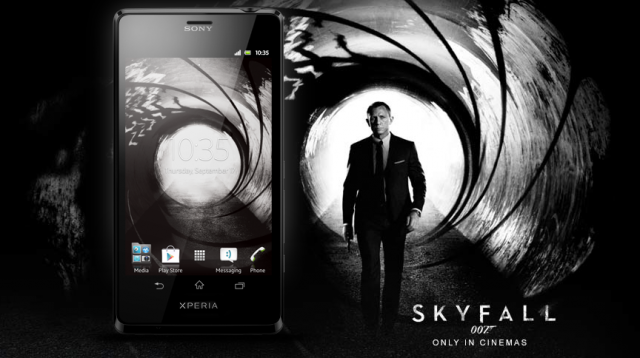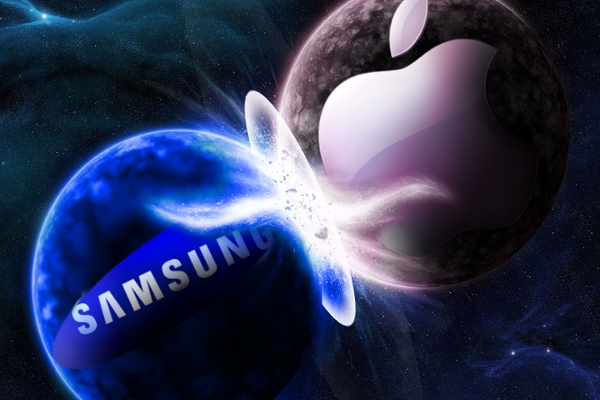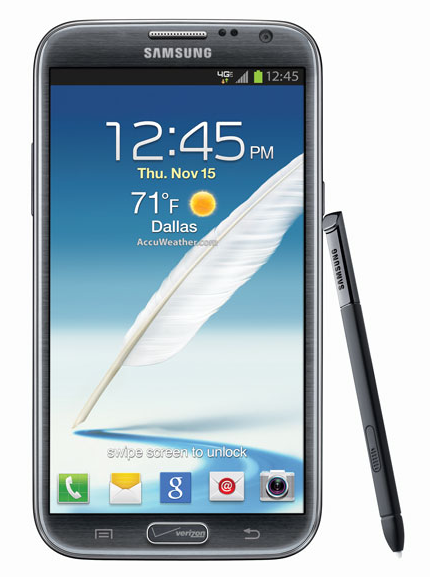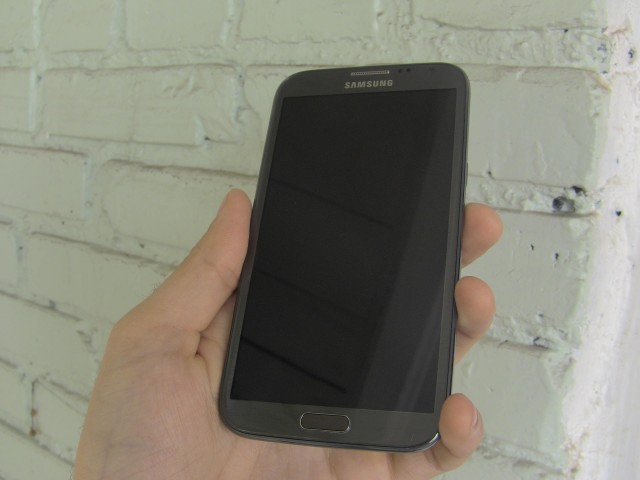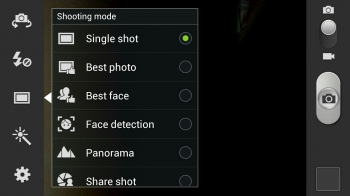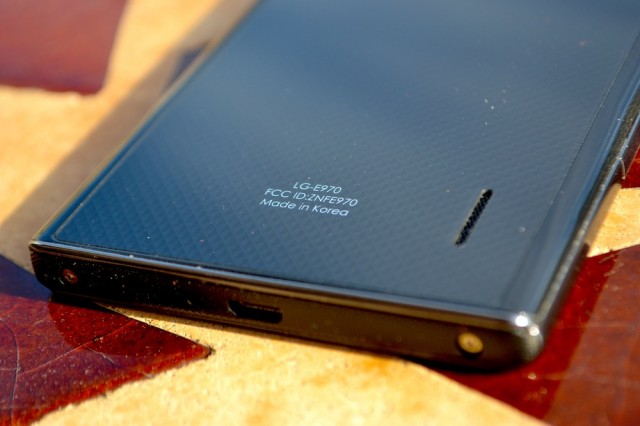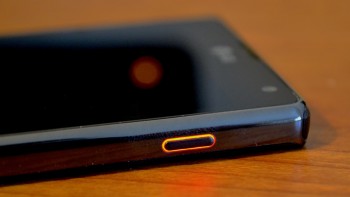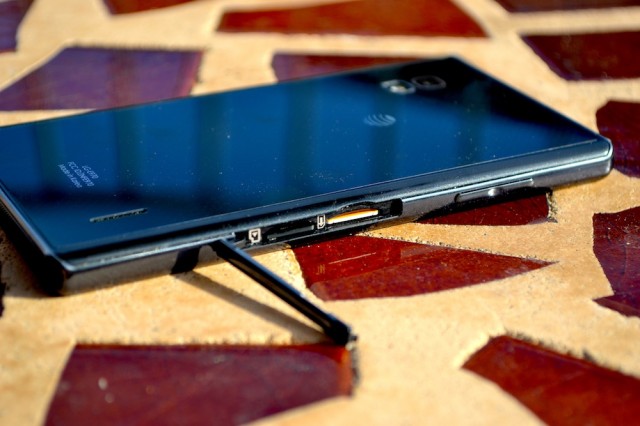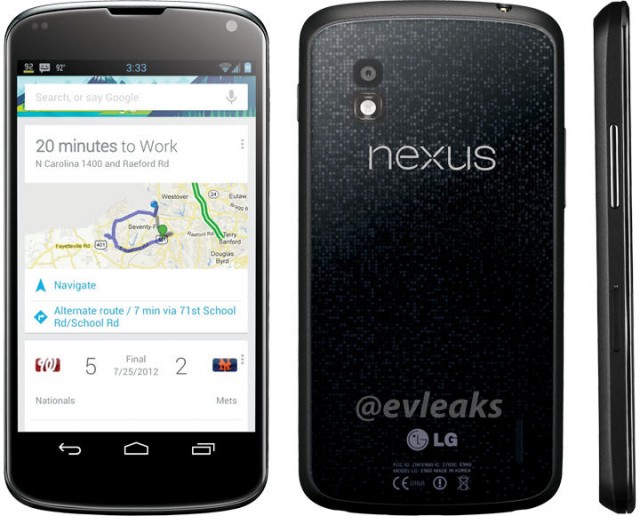Android Authority |
- Amazon Kindle Fire and Kindle Fire HD now on sale in UK and Europe
- Would you like Verizon home button branding with that Galaxy Note 2?
- US Cellular starts shipping Galaxy Note 2 pre-orders today, to land in stores October 26
- Samsung Galaxy Note 2 NYC Event Wrap Up
- Flipboard for Android gets support for audio, offers SoundCloud connectivity
- CyanogenMod dev patches possible unlock gesture logging
- Google Nexus 7 market share still small, but growing
- New Galaxy S3 TV ads released by Samsung, now with less iPhone 5
- Ink-free Wireless Smartphone Photo Printer costs $220, works with Android and iOS devices
- Sprint Galaxy S3 Jelly Bean update coming on October 25, leak says
| Amazon Kindle Fire and Kindle Fire HD now on sale in UK and Europe Posted: 25 Oct 2012 02:31 AM PDT
Unlike the original Kindle Fire that never steps outside its U.S. comfort zone, Amazon is eager to bring its new releases – the 2012 Kindle Fire and Kindle Fire HD — to international markets. Right on schedule, both tablets are now available for purchase in the UK and across Europe. If you can't find it in retail stores yet, the easiest thing to do is to make that virtual trip to Amazon website (well, duh). You'll find the ad-supported Kindle Fire being offered for £129, while the model that won't display advertisements on the lock screen will cost £139. The Kindle Fire HD selection is more varied than the plain old Fire. The ad-supported 16GB and 32GB model can be had for £159 and £199, respectively. If you want the ad-free version, simply add £10 to the price. The 7-inch tablets may have landed, but what about the content? Well, the online retailer has been preparing for the duo's arrival since August, with the launch of its European Appstore. Those in the old continent (UK, Germany and France) will also be able to make use of Amazon's book lending program soon. Topping it off is the arrival of Lovefilm, the movie subscription service, on the two slates. Fancy getting yourself a Kindle Fire or Kindle Fire HD? Related PostsNo related posts. |
| Would you like Verizon home button branding with that Galaxy Note 2? Posted: 25 Oct 2012 02:11 AM PDT
Being the number one wireless carrier in the States may have given Verizon a slight upper hand from others when it comes to enforcing its branding across devices. The Samsung Galaxy S3 was spared from such ordeal, but it looks like Big Red will have its way with the Samsung Galaxy Note 2. We saw a leaked picture of said Verizon variant of the enlarged smartphone last month, where the carrier's logo can be seen stamped on the Note 2's home button. Whatever hope there was that it's nothing but a doctored image has vanished: The Verizon home button branding on the phablet is here to stay.  From ART to WHAT? It may not be as bad of a botched job as the above example, but it still ruins the otherwise smooth design of the Galaxy Note 2 with unnecessary branding. Why Verizon? We've been taught not to judge anything by its cover, unless it's an adult magazine, but it's hard not to notice that forced logo stamping on the small home button. But ultimately, it's still a great device to have regardless of the exterior, and we're sure folks will learn to live with it over time. Does the logo placement bother you at all? Will it affect your buying decision? Are you plotting for ways to remove or mask the front branding? Let us know in the comments below. Related PostsNo related posts. |
| US Cellular starts shipping Galaxy Note 2 pre-orders today, to land in stores October 26 Posted: 25 Oct 2012 01:32 AM PDT
With a phone as big as the Samsung Galaxy Note 2, it should really come with a warning on how it can burn a big hole on your wallet — although it depends on where the purchase is made. Unlike some other carriers, US Cellular has been putting up the Galaxy Note 2 for pre-order at the more standard pricing of $300 with a two-year contract. If you've been waiting anxiously to hear about the Note 2's shipment dates, the regional carrier has announced that it will be shipping the handset for pre-order customers today, October 25th. Those who thought that they have missed the pre-order boat will be happy to hear that it hasn't actually left yet. You can still pre-order the Galaxy Note 2 on US Cellular, but you only have until today to do so. Alternatively, you can wait for the device to hit their brick-and-mortar stores on October 26th. Only the 16GB Titanium Grey model is up for grabs, though. The cost to purchase the Galaxy Note 2 without a contract is $800. Hence, we suggest buying it off-contract elsewhere if you want to save a few hundred bucks. Have you pre-ordered your Galaxy Note 2 yet? Related Posts |
| Samsung Galaxy Note 2 NYC Event Wrap Up Posted: 24 Oct 2012 11:43 PM PDT
Samsung held an event in New York City earlier this evening as part of its Galaxy Note 2 World Tour, and we were there to see it happen. While there wasn’t any earth-shattering news revealed, the event was well received and devices were everywhere for the testing. Read on for a first-hand account of the event.
To kick things off, there was a short video showing the increasing popularity of Samsung devices. After this, Chief Marketing Officer for Samsung Mobile USA, Todd Pendleton, came out with a few more words on the subject, eventually landing on the reason everyone was there in the first place: The Galaxy Note 2. At this point, there isn’t really any more to learn about the Note 2 spec-wise, but he went over a few of the phone’s more impressive features.
Pendleton then passed the mic to Samsung’s Chief Product Officer Kevin Packingham, who held up a device that many were hoping to see, but weren’t sure they would: the Samsung Galaxy Camera. He went over what he described as some of his favorite features, such as the 4.77-inch Super Clear HD display, the 16-megapixel sensor, and the device’s Smart Modes. He also talked for a while about the Galaxy Camera’s ability to wirelessly share photos with other devices up to 200 feet away. After this, Pendleton came back out for a bit and mentioned that the event would wrap up with a musical performance by Kanye West, something Samsung had been unable to keep secret leading up to the event. Then it was time to head backstage and check out the devices in action.
Backstage, the floor was packed with Samsung Galaxy Note 2 display models. This ranged from tables placed in the middle of the room where passers-by could start using the device at will, to a number of specialty kiosks that showed off various features of the phone. Visitors were able to check out the Galaxy Note 2′s music capabilities, try various games and apps on the device, and even order desserts using the phone’s NFC functionality.
Unlike the Galaxy Note 2, which would have been hard to avoid even if you tried, the Samsung Galaxy Camera was harder to track down. These weren’t available for anyone to just use, but instead were in the hands of show staff who would show off the device’s features to those who wanted to see them. More often than not, this included taking a picture of anyone who was curious about the device. While it was possible to get your hands on one, the demand was so high that anyone who got to look at one didn’t get to do so for very long.
In the end, even though there wasn’t much in the way of new announcements, Samsung’s Galaxy Note 2 event was a great way to get the Note 2 into the hands of a lot of people at once. In essence, it was a smaller scale version of Samsung’s challenge to naysayers of the original Galaxy Note to use it for a month, which Mr. Pendleton referred to at the beginning of the show. Now that the Samsung Galaxy Note 2 is becoming available in the U.S., are you planning to get one. With all the carriers available, which one will you choose? Related PostsNo related posts. |
| Flipboard for Android gets support for audio, offers SoundCloud connectivity Posted: 24 Oct 2012 07:47 PM PDT
Popular magazine-style social news reader Flipboard is launching an update to its Android app. According to Inside Flipboard, its latest app release lets users “add a soundtrack to their flipping.” This update lets Android smartphone and tablet users listen to audio content offered under Flipboard’s Audio category and its Content Guide. These include sound bites from NPR’s Fresh Air and PRI’s The World. Additionally, users can connect a SoundCloud account for access to Streams, Likes, Sounds, Sets and Groups. The audio functionality originally launched on Flipboard’s iOS app in May this year. Originally an iOS exclusive app, Flipboard launched on Android this June, integrating social streams from various sources like Google+ and YouTube. The app offers a magazine-like user interface, which makes reading content more pleasant, especially when using a tablet. Flipboard intelligently pulls content from your social networks, and the app competes directly with the likes of Google Currents, Zite and Pulse. Flipboard is a free download from the Google Play store. But Amazon Kindle Fire and Barnes & Noble Nook users need not worry, as Flipboard is also releasing the app update on these app ecosystems soon. Related PostsNo related posts. |
| CyanogenMod dev patches possible unlock gesture logging Posted: 24 Oct 2012 07:18 PM PDT
Smartphone and tablet tweakers are familiar with CyanogenMod as among the more popular custom ROM releases, which build on stock Android through community contributions. The beauty of open-source software is the ability of the community to spot issues and contribute their own fixes. And so, with this collaborative effort, security vulnerabilities are easily addressed. One such issue is the possibility for a user’s unlock swipe gesture to be logged. This bug was introduced when developers added the ability to resize the grid for gesture unlocking. Developer Gabriel Castro says a simple fix involves commenting-out that particular line of code so it is not executed.
The issue is not very serious for many users, because an attacker will need physical access to a device or a device backup. An attacker will also be limited to unlocking single devices, and not Android smartphones and tablets en masse. But still, it’s a vulnerability that might result in data theft given the right circumstances. If you’re using CM on your smartphone or tablet, expect this fix to be introduced in the next update. Or, you can go download a nightly build to ensure all relevant patches are included. Related Posts |
| Google Nexus 7 market share still small, but growing Posted: 24 Oct 2012 05:23 PM PDT
While Android is today’s top platform in terms of smartphone numbers, tablets are an altogether different proposition. The Apple iPad still leads the game in terms of tablet use and mobile access for tablets. But Google’s Nexus 7 may already be making a dent on Apple’s sales, although in a small way. Chitika reports that Google’s tablet offering still has a long way to go to the top. Apple’s iPad (various models) still enjoys 91% of all web traffic from tablets. The rest of the pie is shared among the likes of Samsung’s Galaxy tab, along with other Android tablets and the BlackBerry Playbook. The Nexus 7 itself has a 0.33% share of tablet traffic. But don’t be fooled by the paltry figures, as the Nexus 7 is inching its way up, with a 135% growth since July.
Still, iPad figures are difficult to beat. Cnet notes that Apple’s offering still leads the game, and Android has not yet succeeded in grabbing a significant market share from iOS in the tablet market. “In order to make the graph readable, we had to measure other tablets on a ‘per 100 iPad impressions’ scale,” said a Chitika spokesperson in an interview. The Chitika figures might indicate that Apple may be on the decline, albeit quite slow, with a 0.34% decrease in web traffic in the same period. But with the launch of the latest Apple iPad Mini, should Android tablet makers be concerned that Apple will continue to reign supreme in this market? Related PostsNo related posts. |
| New Galaxy S3 TV ads released by Samsung, now with less iPhone 5 Posted: 24 Oct 2012 03:16 PM PDT
The last time we spoke about Samsung Galaxy S3 TV ads was about a month ago when Apple launched its iPhone 5. Samsung decided it was time to take more hits at the iPhone, but in the process it also made fun of iPhone buyers, which is definitely not a great way to convince them to choose the Galaxy S3 instead. Today Samsung Mobile USA posted three new 30-second TV ads on its YouTube channel that focus on various Galaxy S3 features, without bashing the iPhone in the process – of course, an iPhone is present in one of the videos, but I won’t spoil them for you. What matters is that these new ads are definitely a much better way to go, not to mention that some of them are really funny. The three ads, entitled "Date Night," "Work Trip," "Game On" and embedded below, show regular Galaxy S3 users in regular day-to-day scenarios. The company highlights some of the features of its flagship smartphone including the big screen, the NFC support and S Beam sharing capabilities. Date NightWork TripGame OnThe tag line remains unchanged, "The Next Big Thing is Here." What do you think of these three new TV ads? Related PostsNo related posts. |
| Ink-free Wireless Smartphone Photo Printer costs $220, works with Android and iOS devices Posted: 24 Oct 2012 02:51 PM PDT
How often do you find yourself reaching into your pocket for your phone to take a few spontaneous shots with its camera? I for one am a regular user of my phone’s camera for those opportunities that encourage a quick snap or two. But fun and conveniency doesn’t exactly spring to mind when it comes to printing these photos. Until now. Hammacher Schlemmer, infamous for their rather bizarre range of products that often come with a hefty price tag, have unveiled a new electronic product designed to pair with Android and iOS smartphones alike and print photos wirelessly via a WiFi hotspot. But what makes this product so different from the rest? Well, the perk here is that the printer uses no ink, but instead prints onto special patented paper that’s embedded with yellow, magenta and cyan dye crystals. The convenient nature of this product means its users can bring physical photographs back to life, without the intrusion of pesky cables, or having to upload your photos to your PC prior to printing them off onto bog standard printing paper. The downside of the device is that it costs $219.95 and it comes with a cartridge ready to offer you just 10 prints. Additional cartridges are available at $24.95 a pop. Will you be investing in Hammacher Schlemmer’s new Wireless Smartphone Printer? Let us know in the comments! Related Posts |
| Sprint Galaxy S3 Jelly Bean update coming on October 25, leak says Posted: 24 Oct 2012 02:10 PM PDT
You know how we told you that the U.S. Jelly Bean update for the local Galaxy S3 versions may be less exciting for some carriers? And that Sprint's Galaxy S3 version will be updated at some point this year? Well it turns out that Sprint is indeed ready to let its Galaxy S3 buyers upgrade their handsets to Android 4.1. The leaked screenshot above reveals that the Jelly Bean update (version L710VPALK7) for Sprint's Galaxy S3 (SPHL710) will begin Thursday, October 25 and according to the instructions above, it will be rolled over the air (OTA). In addition to Jelly Bean, Sprint Galaxy S3 users will also get other "enhancements" such as "LTE system selection improvements" and "Exchange interaction improvements (manual sync will try to send items in outbox if initial send failure.) Of course, we also noticed right on top of that document that "all dates are subject to change," so we won't act surprised in case come tomorrow, you won't receive a notification to upgrade your handset to Jelly Bean. As for other U.S. carriers selling the handset, we have no Jelly Bean-related leaks at this time, so we have no idea if it’s coming in the coming weeks/months or in early 2013. In case the Sprint update does arrive tomorrow, let us know how it all went for you. Related PostsNo related posts. |
| You are subscribed to email updates from Android Authority To stop receiving these emails, you may unsubscribe now. | Email delivery powered by Google |
| Google Inc., 20 West Kinzie, Chicago IL USA 60610 | |




















